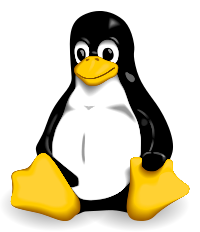Operating Systems

Notice: Today is the last day to drop without a W.
We have two sets of reading to do. First, you'll be reading and working on some semaphore problems (scheduling and concurrency), and I would like you to start getting ready to work on the PintOS project. You should also be working on the Command Line Crash Course, which we will check your knowledge of on Thursday.
First, read Chatpers 2 and 3 of The Little Book of Semaphores. You'll want to take some thorough notes on chapter three, as it is fundamental to everything that we'll be doing this term.
When I say "take thorough notes," you should probably refer to How to Read in Operating Systems for a definition of what I mean.
Come to class having worked through Rendevous and Mutex in Chapter 4. Come prepared to discuss your process, and share potential solutions with your classmates in groups. Your solutions should be submitted before you arrive in class.
As always, written work should be submitted as a Markdown document (.md) or a compressed file containing the LaTeX source of your report (.tar.gz) and a compiled PDF of the output. LaTeX submissions should be sources only, without temporary files (.aux, .log, etc.).
On Linux, you might use UberWriter or ReText for Markdown, and on Windows, MarkdownPad. Any editor works for LaTeX, although some prefer tools that are designed for the purpose.
Assignment: Rendevous and Mutex
Naming Convention: username-rendevous-and-mutex
Moodle Link: http://moodle2.berea.edu/course/view.php?id=2243
First, read section one of the PintOS documentation. You can also get this as a PDF PDF.
In addition, you should explore the PintOS anonymous repository. Check out a copy, and explore it as you read the introductory material.
git clone git://pintos-os.org/pintos-anon
By "explore," I mean "you should probably take some notes." Try and build yourself a "map," if you will---an outline or other set of notes that starts to try and make sense of what is in these various files. And, as with my recommendations for other readings, I suggest you note any questions that arise (whether they be about the structure of the code or specific things you see but do not understand) and bring those to class.
We'll spend most of the semester working with PintOS, so fear not---you will understand it before we're done. Even so, it is a good idea to get started early.
As always, written work should be submitted as a Markdown document (.md) or a compressed file containing the LaTeX source of your report (.tar.gz) and a compiled PDF of the output. LaTeX submissions should be sources only, without temporary files (.aux, .log, etc.).
On Linux, you might use UberWriter or ReText for Markdown, and on Windows, MarkdownPad. Any editor works for LaTeX, although some prefer tools that are designed for the purpose.
Assignment: PintOS Questions 1
Naming Convention: username-pintos-questions-1
Moodle Link: http://moodle2.berea.edu/course/view.php?id=2243
This website is provided under a CC BY-SA license by the
The Berea CS Department.
Fall 2013 offering of taught by Matt Jadud